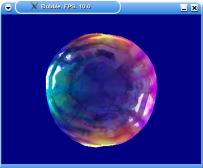About Muli3D - Features - Goals - Screenshots - License - Change log - |
 |
|
||
 |
|
 |
|
Information: About Muli3D Overview Muli3D is a platform-independent software rendering library, which implements features of current-generation graphics cards. Clean code and functionality, which exceeds features of current hardware in specific areas, make Muli3D well suited for prototyping and research of new effects.  The library Muli3D is written in C/C++. The SDK, which is available for download, comes with documented source-code, an application framework and several samples which present different aspects of Muli3D. |